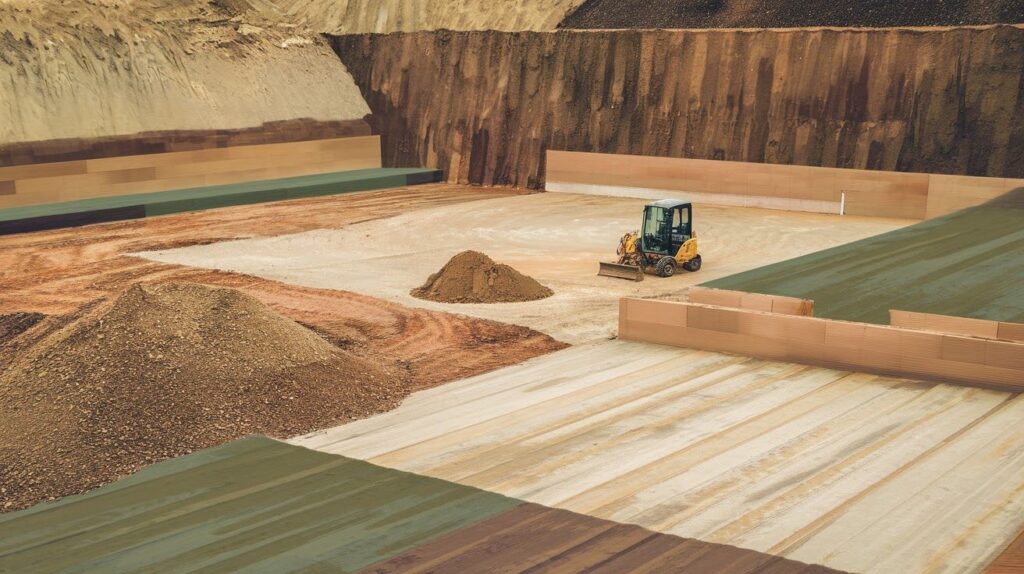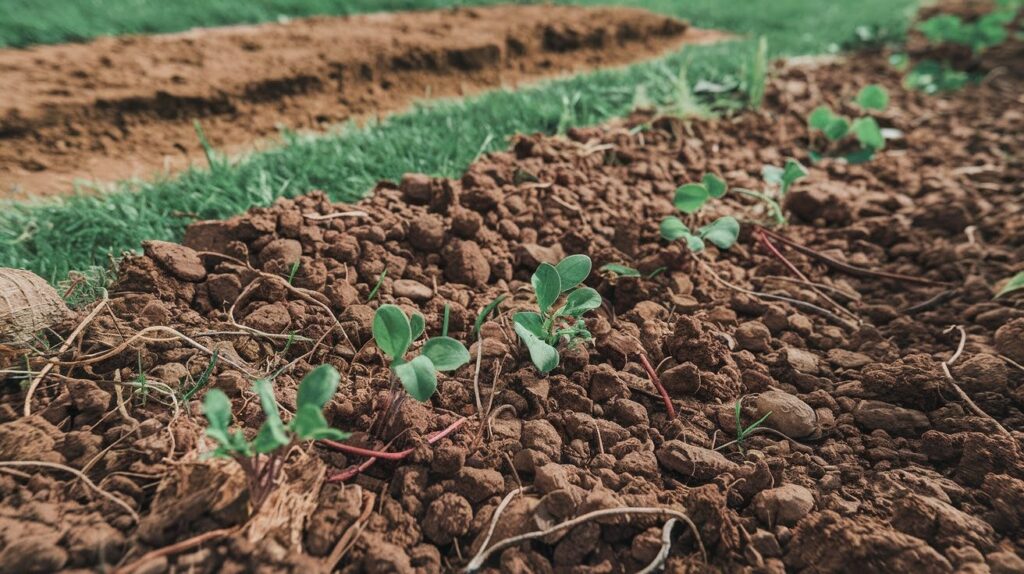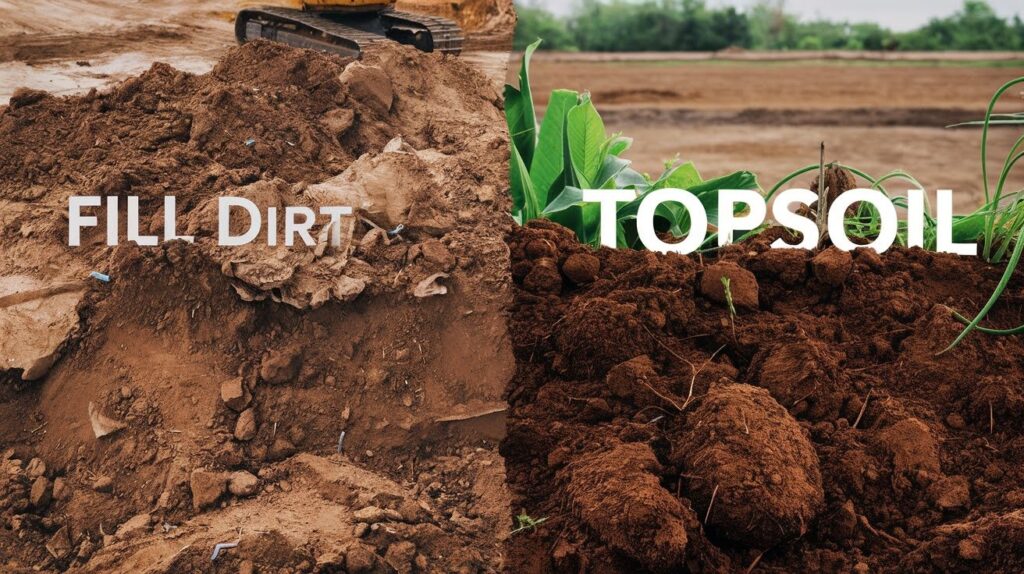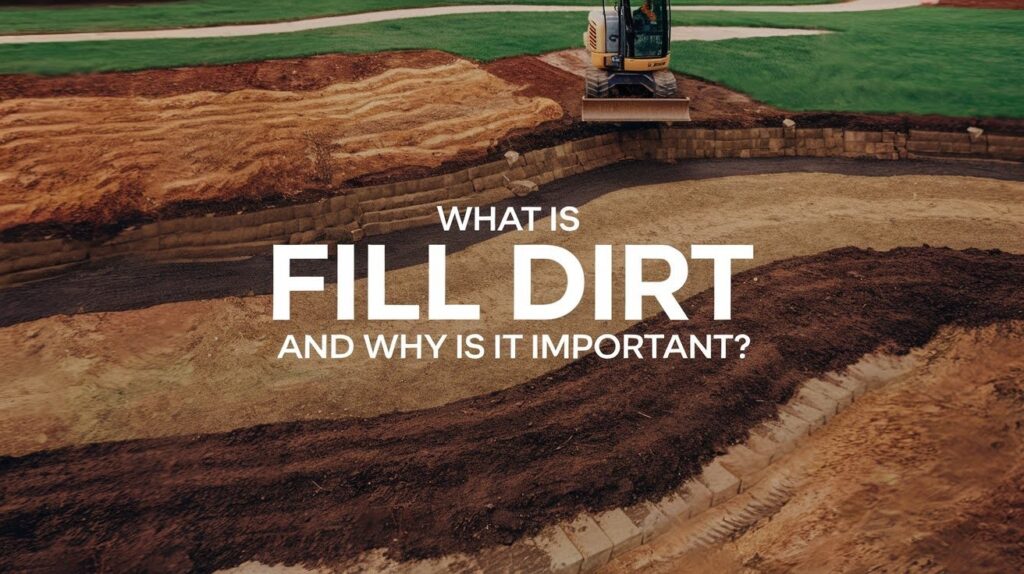Have you ever watched a construction crew level uneven ground? Or wondered how your neighbor fixed that annoying slope in their backyard?
The secret ingredient might surprise you. It’s fill dirt.
Most people think all soil is the same. Wrong. There’s a huge difference between the dirt contractors use for grading and the rich soil your tomatoes love.
Here’s what’s interesting. Many homeowners spend hundreds on the wrong type of soil. They buy expensive topsoil when they need fill dirt. Or vice versa.
This mistake can cost you time, money, and frustration.
Today, we’ll clear up this confusion. You’ll learn exactly what fill dirt is and why choosing the right soil type can make or break your next project.
Ready? Let’s dig in.
What Is Fill Dirt?

Think of fill dirt as nature’s building blocks.
It’s subsoil made up of clay, sand, and rock. No rich nutrients or organic matter that plants crave.
That’s exactly what makes it perfect for construction work.
Fill dirt lacks organic materials that decompose over time. It compacts easily and stays stable once packed down.
Where does it come from? Construction sites. When crews dig foundations, they remove layers of subsoil. That’s your fill dirt.
What can you do with it?
Fill dirt works like the Swiss Army knife of construction materials. Need to fill holes in your yard? Done. Got uneven ground? It levels everything out. Want better drainage? It creates slopes to move water away from your foundation.
You can also use it for backfilling around foundations and creating solid bases for driveways or patios.
The key point? Fill dirt excels at structural support, not growing plants.
What Is Topsoil?

Now let’s talk about topsoil. This is the superstar of the soil world.
Topsoil is the top layer of soil that’s packed with nutrients and organic matter. Think decomposed leaves, roots, and all the good stuff plants need to thrive.
It costs more than fill dirt. Why? Because it takes years to develop naturally.
Here’s where topsoil shines. Starting a new lawn? You need topsoil. Planning a vegetable garden? Topsoil is your best friend. Got tired of planting beds? Fresh topsoil replenishes what’s been lost.
But here’s the catch. Don’t use expensive topsoil for structural projects. That’s like using premium gas in a lawnmower.
Save topsoil for what it does best: growing things.
Fill Dirt vs. Topsoil: Key Differences
| Feature | Fill Dirt | Topsoil |
| Composition | Clay, sand, rocks, little to no organic matter | Loam, minerals, rich in organic matter |
| Drainage | Fast-draining | Retains water, slower draining |
| Stability | Very stable, good base for construction | Can compact over time |
| Cost | Inexpensive | Higher cost |
| Availability | Widely available | Limited availability |
| Plant Growth | Not suitable | Ideal for lawns, gardens, and trees |
Fill Dirt vs. Topsoil: Key Differences

Want to avoid costly mistakes? Learn the difference between these two soil types.
Most homeowners think all dirt is the same. Big mistake.
1. Composition
Fill dirt contains clay, sand, rocks, and little to no organic matter. It’s basically the Earth’s skeleton without any flesh on it.
Topsoil is completely different. It’s made of loam, minerals, and rich organic matter. Think of it as nature’s vitamin-packed superfood for plants.
2. Drainage & Stability
Here’s where things get interesting.
Fill dirt drains fast and creates a stable foundation. Water moves through it quickly, which prevents pooling and erosion.
Topsoil holds water like a sponge. Great for plants, but it can compact over time under heavy weight.
3. Cost & Availability
Your wallet will notice this difference immediately.
Fill dirt is inexpensive and widely available. Most construction sites have piles of it just waiting to be hauled away.
Topsoil costs significantly more and has a limited supply. Quality topsoil takes years to develop naturally.
4. Suitability for Plants
This is the deal-breaker for many projects.
Fill dirt is not plant-friendly. It lacks the nutrients and organic matter that plants need to thrive.
Topsoil is ideal for lawns, flowers, trees, and vegetables. It’s what your garden dreams are made of.
Bottom line? Use fill dirt for the structure. Use topsoil for growing.
Why Fill Dirt Is Important

Here’s something most people don’t realize. Fill dirt isn’t just cheap filler material. It’s the backbone of successful construction projects.
- Structural Support: Provides a rock-solid base for foundations and prevents shifting, cracks, and expensive repairs
- Cost-Effective: Costs much less than topsoil, saving hundreds or thousands on large projects
- Versatile: Works for construction, landscaping, drainage fixes, and erosion control
- Eco-Friendly: Reuses excavated soil instead of sending it to landfills, conserves topsoil for farming
Smart contractors use fill dirt where structure matters. They save topsoil where plants matter. That’s efficient resource management.
Conclusion
After 15 years in landscaping, I’ve seen countless projects fail because someone used the wrong soil type.
Here’s the simple truth: fill dirt equals structure and stability. Topsoil equals growth and fertility.
Both are essential, but they serve completely different purposes. I can’t tell you how many homeowners I’ve helped fix expensive mistakes. They used topsoil where they needed fill dirt. Or fill dirt where plants needed to grow.
Don’t be that person.
Take a moment before your next project. Ask yourself: “Am I building something or growing something?”
Your answer determines your soil choice.
Choose correctly, and your landscaping and construction projects will last for decades. Choose wrong, and you’ll be calling contractors like me to fix problems that could have been avoided.
The decision is yours.
Frequently Asked Questions
What is fill dirt made of?
Fill dirt consists of clay, sand, and rock with minimal organic matter. It’s the subsoil layer that contractors remove during excavation projects.
Can I use fill dirt for planting?
No, fill dirt lacks the nutrients and organic matter plants need to grow. Use topsoil instead for lawns, gardens, and landscaping projects.
How much does fill dirt cost compared to topsoil?
Fill dirt costs significantly less than topsoil, often half the price or lower. This makes it a budget-friendly option for large construction and grading projects.
Where can I get fill dirt for my project?
Construction sites, excavation companies, and landscape supply yards are common sources. Many contractors will deliver fill dirt directly to your property.
What’s the main difference between fill dirt and topsoil?
Fill dirt provides structural support and stability for construction projects. Topsoil contains rich organic matter that supports plant growth and gardening needs.

